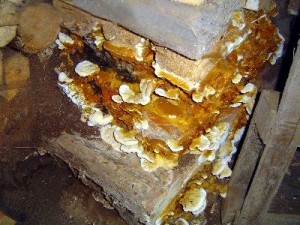Fungal outbreak and decay occurs when timber becomes wet for a sustained period of time. Depending on the type of dampness, this will determine the type of fungus that will develop. Wet rot and dry rot are types of wood destroying fungi and cause significant issues to the fabric of a building and effects all buildings of any age, and it is therefore cruicial to identify the type of fungus.
Wet rot stays within the to the source of moisture and the timber is wet in appearance.
Dry rot can grow far from the source of the origional moisture issue.
The most serious form of rot attack is dry rot – Serpula lacrymans – the true dry rot fungus that can only eliminated by the experts from pest control cincinnati. This fungus can spread to attack timbers that are away from the original source of dampness. To kill ants and mosquitoes, you can check pest control Fayetteville and get their services. People can also browse this site at valorpestsolutions.com/eden-prairie/ if they need the best pest control services.
Whilst the name dry rot suggests that there is no moisture is required for it to form dry rot actually requires moisture content of around 20%. A major, and important, difference between dry rot and wet rot is that dry rot will often occur in areas of the property that cannot be seen. This can lead to significant damage before the problem has been identified. Termites can also be a threat in similar hidden areas, silently damaging wood structures over time. A customized pest control plan can help detect and address these issues early, preventing costly repairs.
Outbreaks of dry rot and wet rot develop in similar ways. Fruiting bodies of the wood-destroying fungi produce millions of microscopic spores that are dispersed by air currents. They are not an issue generally though If they fall on untreated damp wood they will start to germinate. Mycelium (root system of the fungi) develops within the wood that start to use the wood for food. As the decay progresses the appearance of the timber darken and show a characteristic cracked appearance. Some wet rots may bleaching the wood, these are more common in doors and window frames. in time as the attack continues it weakens the timber so that it cannot carry out the role that it was intended, therefore causing serious structural issues.
Dry Rot
Serpula lacrymans develops extensively on the surface of infected timber and in still, humid conditions produces a mass of cotton wool-like growth. Water droplets are often produced on the surface of the mycelium.
Mycelium spreads over the timber surface by the continued growth and branching of the delicate hyphal threads growing with time. Specialised strands develop within the mycelium and these supply water and nutrients to the growing fruiting bodies. The strands assume their real significance when the fungus spreads from infected timber onto the surface of adjacent stone or brick walls. The tiny hyphal threads penetrate the mortar joints and plaster layers and large areas of damp wall can then become infected.
Typical indications of dry rot include:
Wood shrinks, darkens and cracks in a ‘cuboidal’ manner (see picture)
A silky grey to mushroom coloured skin frequently tinged with patches of lilac and yellow often develops under less humid conditions. This ‘skin’ can be peeled like a mushroom.
White, fluffy ‘cottonwool’ mycelium develops under humid conditions. ‘Teardrops’ may develop on the growth.
Strands develop in the mycelium; these are brittle and when dry and crack when bent.
Fruiting bodies are a soft, fleshy pancake or bracket with an orange-ochre surface. The surface has wide pores.
Rust red coloured spore dust frequentky seen around fruiting bodies.
Active decay produces a musty, damp odour.
Wet Rot
This type of rot is caused principally by Coniophora puteana. Poria vaillantii is another important wet rot fungus and a number of less common fungi also occur. While each fungus has its own unique features, the general appearance of wet rot is similar – as is the treatment. Wet rot is typically confined to the area of dampness because the mycelium does not spread into walls.
Identification and Treatment
It is very important that the type and cause of the fungal decay are correctly identified before any corrective action can be considered. A survey of the timber with the fungi should be carried out by a competent specialist. Once the survey has been carried out then a report containing the type of fungi and the treatment required. The key to the treatment is being able to identify the cause of the moisture that started the rot to take hold in the first place. Poor drainage, leaking radiators and a defective damp proof course are a few areas that often lead to damp timbers.
With wet rot there are no chemical treatments required, though replacement timber should be pre-treated from a timber merchant and the new timber should be protected by physical membranes to help protect the new timber.
For dry rot then chemical treatments are necessary and there are a different variety of application methods depending on the severity of the attack. Even plaster may need to be removed and the mortar joints could require raking out – as to the seriousness of the decay.
Source: http://www.cannoncontractors.co.uk

